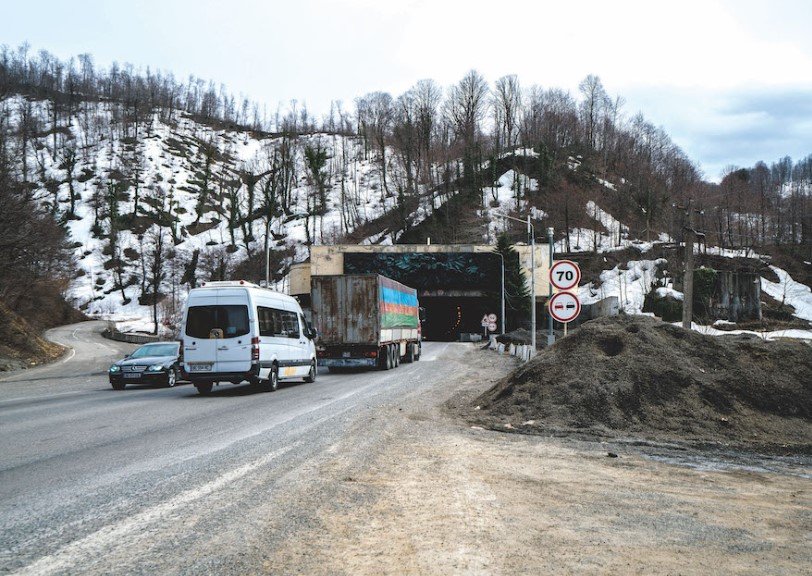A colossal new road project is reshaping the landscape of the Caucasus region, with China at the helm of a £345 million infrastructure venture set to connect Russia and Georgia. The Kvesheti-Kobi road, winding through the breathtaking Khada Valley, promises to revolutionize trade and travel along a vital corridor.
A New Route Through the Mountains
The Kvesheti-Kobi road isn’t just a patch of asphalt — it’s an engineering marvel. The route stretches over 9 kilometers (just over 5.5 miles), cutting through Georgia’s rugged mountains. What makes it extraordinary is its structure: six massive bridges and five tunnels, half of which are underground.
Why such a complex design? It’s all about bypassing the treacherous terrain. The existing road between Kvesheti and Kobi often becomes a no-go zone in winter, blocked by heavy snow and avalanches. This new route offers a lifeline, staying open when nature doesn’t cooperate.
Chinese Engineering at the Core
The powerhouse behind this ambitious project is China Railway Tunnel Group. Known for its expertise in tunneling, the company brought in a monster of a machine — a 4,000-tonne tunnel boring beast with a jaw-dropping 15-meter diameter, making it one of the largest in the world.

Construction crews are drilling deep into the mountains to create safe passage. The longest tunnel in the project alone spans 9 kilometers, nearly half the road’s length. It’s designed to withstand the region’s tough weather and geological challenges.
Bridges Reaching for the Sky
The bridges are no less impressive. One particularly daring stretch of the road features a bridge soaring 51 meters above the Khada Valley floor. It spans a staggering 432 meters, connecting two cliffs like a giant steel thread.
For locals and travelers alike, the view from this bridge will be breathtaking — both in beauty and height. It’s not just about aesthetics, though. The elevated design minimizes environmental disruption, reducing the road’s footprint on the pristine valley below.
International Backing Fuels Progress
It’s not just China bankrolling this project. The Kvesheti-Kobi road is backed by heavyweight financial players — the Asian Development Bank and the European Bank for Reconstruction and Development. Together, they’ve poured 1.24 billion Georgian lari into the venture (that’s roughly £344,674,244).
Why such a hefty investment? This road is more than a shortcut. It’s a vital artery in the North-South Corridor, a key trade route linking Russia, Georgia, and Armenia. Keeping that route open, even in the harshest winters, is essential for regional trade and economic stability.
A Road Built for the Future
The Kvesheti-Kobi project isn’t just about today. It’s part of a bigger picture — Georgia’s push to modernize its infrastructure and become a central hub for regional logistics.
For China, it’s another strategic step in expanding its global Belt and Road Initiative, strengthening economic ties across Eurasia. For Georgia, it’s a chance to boost tourism and trade, connecting its mountain villages to the outside world more reliably than ever before.
The road is set to open in the next few years, and when it does, it won’t just be a new way through the mountains. It’ll be a symbol of international collaboration and engineering prowess — a lifeline that cuts through stone and snow to keep the region moving.
